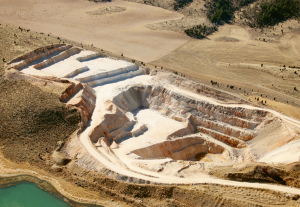Any long-term solution to the projected decline in phosphate supply must involve improving phosphorus use efficiency in crop plants.
In times of rising food prices and global food insecurity it is important to remember the basic needs for productive and efficient agriculture. One of these needs is the use of fertilizer. While much research focuses on the problem of overfertilization and its negative environmental impacts, mostly due to nitrogen runoff, another reason to rethink the wasteful use of fertilizer is that complete fertilizer is a non-renewable resource due to its phosphorus component, an essential plant macronutrient that is almost exclusively mined as the mineral phosphorite, also known as rock phosphate.

Over 70% of global phosphorite reserves are held by Morocco, followed by China with 5%, Syria and Algeria with 3% each, and Russia, South Africa, the US, Egypt and Jordan with 2% each. However, agriculture does not just depend on phosphorite reserves, but on the whole fertilizer production process, which requires a functioning phosphorus supply chain. Production is influenced by political and economic factors such as war and conflict. Despite its vast reserves, Morocco is only the second largest phosphate producer, due to ongoing tensions with Western Sahara and high costs of mining. Therefore, it should be kept in mind that not only are the reserves critical for food security, but that the immediate accessibility of phosphates to farmers is also critical for food security. Global reserves that are accessible at a reasonable cost of mining are important in the long term, but how long will these reserves last?
Geophysicist Marion King Hubbert formulated the concept of peak oil in 1956, reminding us that the planet’s resources are not infinite. Decades later, and attracting much less attention, a similar idea was established for phosphorus, and it was predicted that its peak could be reached globally as soon as 20331…
…click on the above link to read the rest of the article…